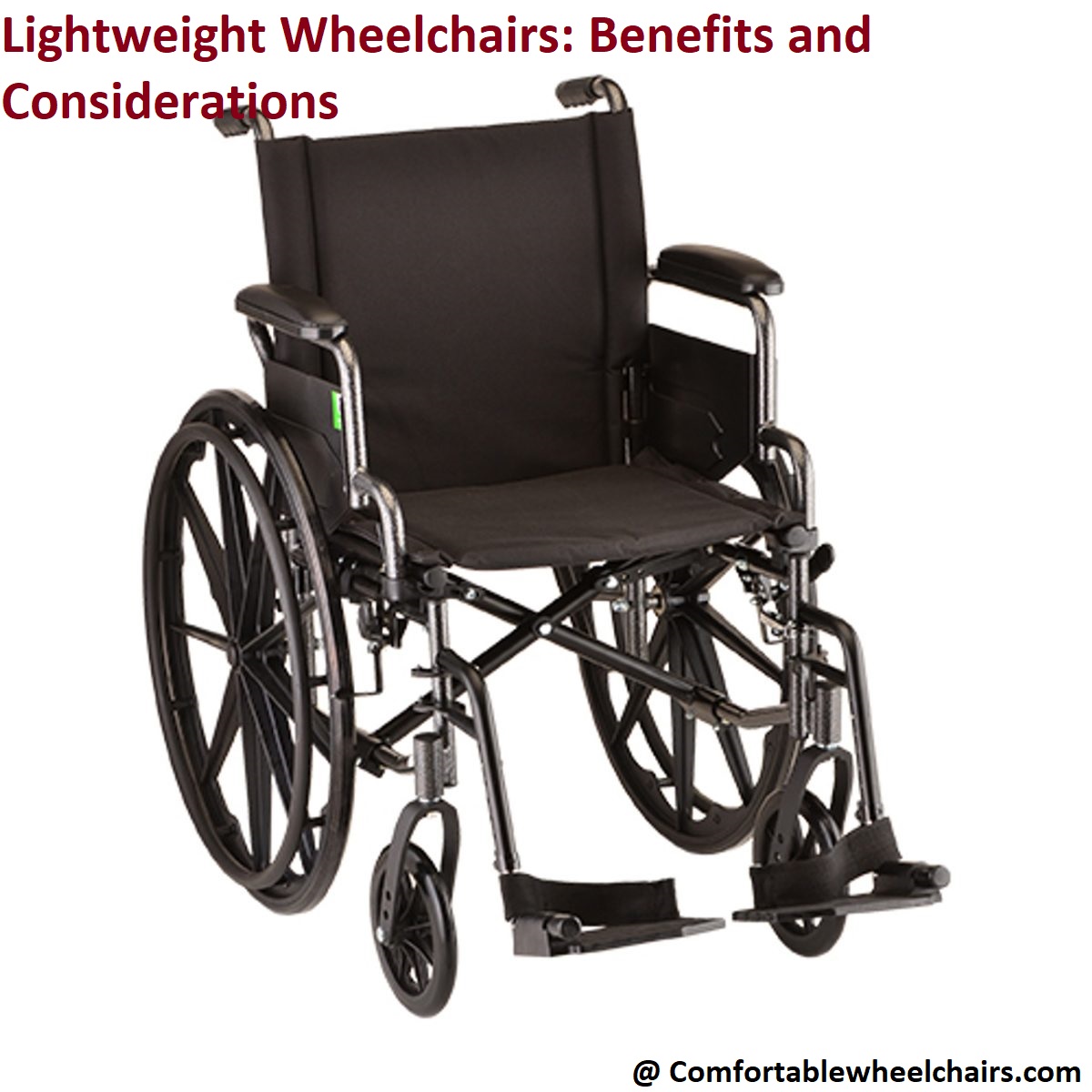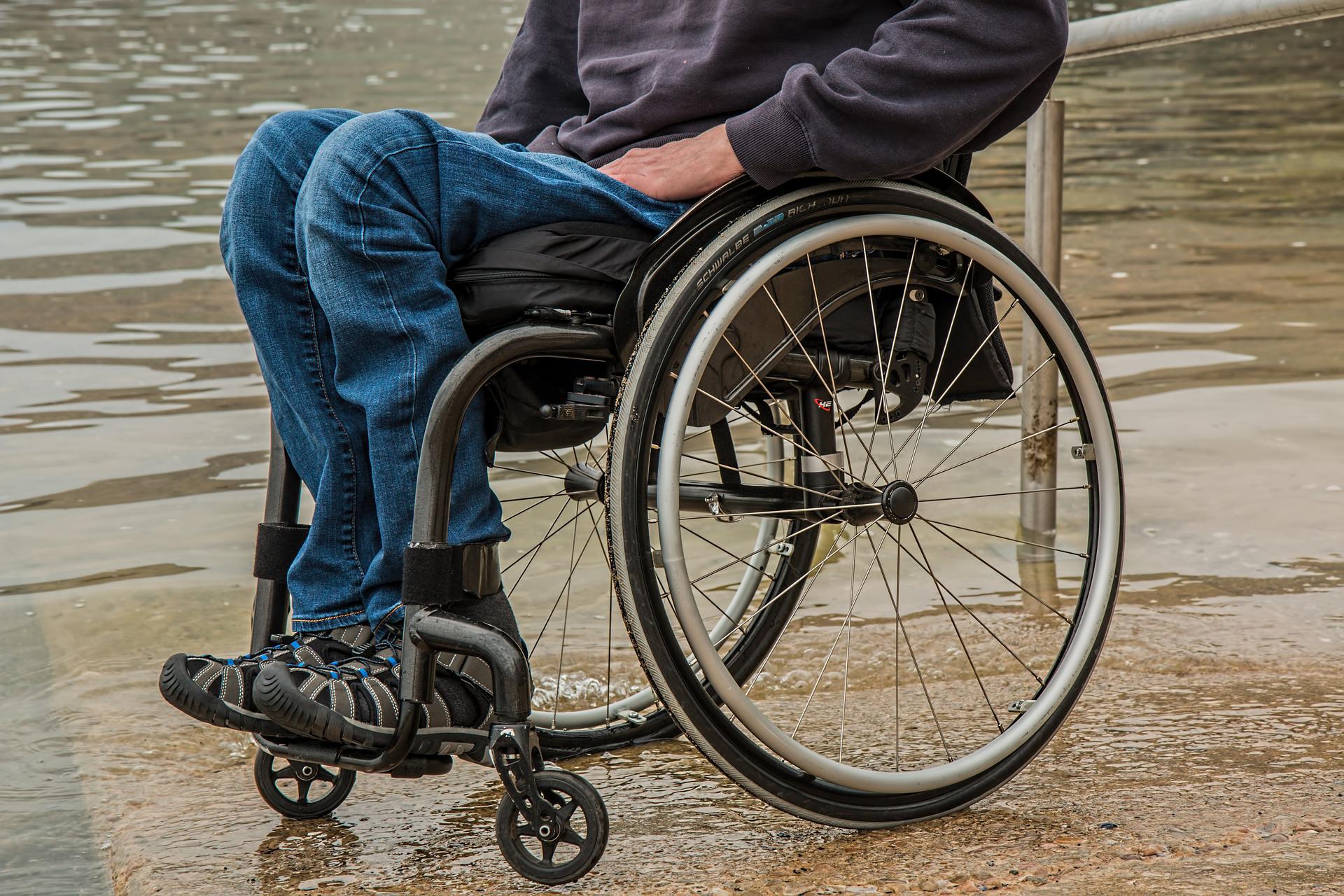Are you considering a lightweight wheelchair for greater mobility? Using this complete guide, you’ll learn about the advantageous features of these wheelchairs as well as the factors to consider before making your purchase.
Get ready to experience effortless maneuverability and convenience with a lightweight wheelchair!

Lightweight wheelchairs are suitable for many individuals with ambulatory disabilities. They are typically easier to use and maneuver compared to standard chairs, which makes them great options for everyday use or travel. This guide will provide a comprehensive overview of the benefits and points to consider when selecting a lightweight wheelchair.
First, we’ll look at the advantages of lightweight wheelchairs and how they differ from standard models. Then, we’ll discuss considerations in terms of size, design, and additional features when it comes to making your selection and purchase decisions. Finally, we’ll provide an overview of pricing options for lightweight wheelchairs so you can budget appropriately for your new device.
Definition of Lightweight Wheelchairs
A lightweight wheelchair is a type of wheelchair, which is lighter in weight than the standard manual chair. Lightweight wheelchairs have frames made of aluminum or chromium-molybdenum steel alloy, and many feature quick-release wheels to reduce the overall weight. These chairs are typically used when an individual needs more mobility and transportability than a standard wheelchair can provide.
Lightweight wheelchairs are typically around 10 – 15 kg compared to an Ultra light model that may weigh as little as 6 – 8 kg; making them easy to maneuver and easy to transport. This makes them ideal for users who have limited upper body strength or require assistance with ramp access or rises; such as those who take public transportation, those transferring from car to chair, or those using powered stair-climbers. Additionally, other beneficial features that come with lightweight chairs include collapsibility for space savings and improved maneuverability within tight spaces for increased safety and comfort.
When considering a lightweight wheelchair, there are a number of factors that should be taken into consideration such as frame construction material (i.e., aluminum vs chromium-molybdenum), leg rest angle adjustments, tire choices (i.e., solid versus pneumatic) as well as seat cushion options like gel cushioning or air all contribute towards the purchasing decision process and must be weighed accordingly according to user preference & individual needs.
It is also important to note that no two people’s body structure & positioning needs will be the same so it is important to consult your doctor & physical therapist with all purchases prior to opting for any personal mobility aid device such as a lightweight wheelchair.
Benefits of Lightweight Wheelchairs
When selecting a wheelchair, one of the most important decisions people must make is whether to choose a lightweight model. Lightweight wheelchairs offer unparalleled convenience, portability, and comfort, but they come with their own unique benefits and considerations that must be looked at carefully when making this important decision. The following section outlines the primary advantages associated with lightweight wheelchairs to help those shopping for one make the best possible selection.
Weight The most noticeable benefit of lightweight wheelchairs is the overall reduced weight compared to their heavier counterparts. This not only helps ease transport, but it also assists those who may have difficulty pushing themselves in heavier models. Lightweight models are designed specifically with ease of use and maneuverability in mind, so they can provide much smoother movement than traditional models on uneven terrain or inclines. In addition, these chairs can often be folded down quickly and easily for storage or transport and unfolded as necessary for use in any environment.
Durability Despite their lightness in weight and slim profile design, lightweight wheelchairs also offer increased durability compared to traditional models over extended use periods. This improved resilience is due to the high-quality construction materials used during production as well as other features such as rust-resistant finishes on certain parts that prevent corrosion from environmental wear-and-tear over time. Additionally, manufacturers may include features such as adjustable tension straps for easier turning or larger wheels for greater stability at higher speeds for added convenience and safety when using these chairs outdoors or in busy areas like hospitals or airports where quick navigation is required at times.
Increased Mobility and Independence
Lightweight wheelchairs provide several benefits, including increased mobility and independence. For individuals who have difficulty getting around due to physical limitations, a lightweight wheelchair is a great option as it can be maneuvered with relative ease and without assistance. This can open up the possibilities of quickly and easily accessing places like shops and parks. As well as being easy to move around, lightweight wheelchairs also save on space and storage requirements. This makes them an ideal choice for those who spend their time in urban areas for example, where storage space is scarce.
Additionally, due to their compact size and reduced weight, people with limited core strength can maneuver the chair more easily than a heavier model where the additional pressure on the arms and shoulders is usually felt when trying to move or carry it. As an added benefit, lightweight chairs also aid with high-level transfers such as onto beds or transport vehicles.
However, these chairs are not suitable for every user or lifestyle so careful consideration should be taken before choosing this type of chair – there are several important factors that need to be taken into account such as weight capacity, width of seat and back support options which will all affect comfort levels when using the product. Additionally, they suffer from lower durability compared to bulkier options – however there are now improved versions available which include stronger materials such as titanium ensuring greater longevity in comparison with other models in its class.
Easy to Maneuver and Transport
Lightweight wheelchairs offer a number of advantages over traditional models. Since they are lighter, they are easier to maneuver, particularly for weaker users who may lack the strength to push heavy wheelchairs. They are typically simpler to transport as well since many have foldable designs that allow you to put them in the trunk of a car or carry them with you on public transportation.

When shopping for lightweight wheelchairs, there are several considerations that should be taken into account before making a purchase. Weight capacity is an important factor since some lightweight wheelchair models require a weight limit of less than 250 pounds. Wheel size is another consideration, as larger wheels provide better maneuverability and stability when traversing uneven terrain. Additionally, some lightweight chairs come equipped with adjustable-height back supports which can be beneficial for those who suffer from back pain or need extra support while seated. Finally, features such as armrests and adjustable leg rests may contribute to your overall comfort while sitting in the chair.
III. Factors to Consider when Choosing a Lightweight Wheelchair
Choosing a wheelchair is complicated and involves several decisions. It’s important to consider your individual goals, abilities, and budget. Following are some of the key factors to consider when selecting a lightweight wheelchair:
- Mobility: How much power do you need to move around? Lightweight wheelchairs are generally easier to handle and maneuver than their heavier counterparts. A well-designed wheelchair should improve your accessibility, allowing you to get around while minimizing physical strain.
- Weight Capacity: Not all lightweight wheelchairs can accommodate the same weight capacity. Check the specs in detail before buying, as heavier users may require stronger frames or larger seat widths for comfort and stability.
iii. Price: Most manufacturers offer different price ranges for their chairs, usually based on weight capacity and features offered in each respective model type — so be sure to compare prices before you buy! Also be aware that purchasing extras such as cushions or wheels might increase the cost significantly.
- Seat Size: Before choosing any type of chair it’s important that that your hips fit comfortably into the seat pan while maintaining proper posture and stability with your legs extended in front of you at least one foot above the ground when seated in an upright position. Proper fitting will help ensure comfort during long periods sitting or traveling over uneven terrain (such as gravel roads).
v Add-on Options: Different types of wheelchairs come with varied accessories—such as side bags for carrying daily items or extra foot rests for added comfort—which can add an additional cost. It’s essential to understand how much these costs might add up before purchasing a particular chair so you make sure it suits both your budget and needs.
User’s Needs and Preferences
When considering a lightweight wheelchair, users and their caregivers should keep in mind the individual’s specific needs and preferences. Are there any special accessories required? Will the wheelchair need adjustable parts to accommodate an individual’s changing height or size? Does the user prefer an outdoor or indoor chair? Features such as adjustable components, ergonomic design, accessories, armrests, footrests, foldability and durability should be taken into consideration when selecting a lightweight wheelchair.
Different activities may require different types of wheelchairs. For instance, a user who requires an active lifestyle may find a folding manual chair bulkier than an ultra-lightweight powerchair that offers adjustable backrests and tilt-in-space options. For individuals who frequently travel by car or train, folding wheelchairs are easier to manage than larger powered models. Lightweight wheelchairs can also help with maintaining posture throughout the day and reduce fatigue from pressure points when adjusted correctly for each user’s unique body measurements.
Once users’ needs have been established, the next step is to consider details such as weight capacity and material type for maximum comfort and support. Weight capacity for manual chairs can range from 250lbs to 350lbs; whereas with power chairs weight capacity may range from 300lbs to 500lbs. Additionally, many lightweight models offer interchangeable parts such as arms, back supports, footplates etc., depending on an individual’s specific requirements. It is important to ensure that all of these differences are carefully considered before making any purchase decision so that you can get the best fit possible.
Weight Capacity and Durability
For active wheelchair users, the strength and weight capacity of their chair is an important factor to consider. Weight capacities can vary from one manufacturer to another, so it is essential that you do your research before making a purchase. Look for a product that has been tested for stability and can carry your body weight safely.
It is also important to look for a product that has been designed with materials that are resistant to wear and tear. Lightweight wheelchairs may offer increased maneuverability and comfort due to their lighter construction, but they may not hold up as well over time as heavier chairs with more durable components.
Wheel Size and Type
When selecting a wheelchair, it is important to consider the size and type of wheels for your particular needs. The size of the wheels affects the maneuverability, as small wheels make turning tight corners easier but mean you won’t be able to travel over rough terrain. Large(er) wheels provide greater stability but require more effort to turn and may not fit through some doorways.

The type of wheel should also be considered: standard wheelchair-sized tires are commonly used but can overheat on long trips or become damaged by sharp objects; air-filled tires are lighter and more durable, offering smoother operation than traditional rubber ones, while other options include solid tires that do not require any maintenance or puncture repair kits.
Additionally, you may want to consider features such as quick-release axles or hand rims that offer greater control and heavier-duty frames for extra stability.
Conclusion
Overall, investing in a lightweight wheelchair has many benefits. Unlike heavier traditional wheelchairs, these models are easier to transport and store. They require less effort to operate, making them well suited for individuals who have mobility issues or need to cover longer distances. Above all else, lightweight wheelchairs come with improved stability and posture support, which offer a more comfortable ride experience.
When choosing a wheelchair it is important to consider factors like user height and weight, portability requirements, level of positioning support you need and intended use (indoor/outdoor). It is also important to remember that although light in weight, the frame should still be able to support the user’s body weight. With these considerations in mind you should now be prepared to find the lightweight wheelchair best suited for your needs and lifestyle.
FAQs
What is the advantage of a lightweight wheelchair?
A lightweight wheelchair is easier to maneuver and transport, making it more convenient for the user. It also reduces the risk of injury and strain for caregivers who have to lift or push the wheelchair.
What are considerations for a wheelchair?
Considerations for a wheelchair include the user’s physical needs and limitations, the intended use of the wheelchair, and the user’s lifestyle and environment.
What is considered lightweight for a wheelchair?
A wheelchair weighing less than 35 pounds is considered lightweight.
What is the most important consideration when designing a wheelchair?
The most important consideration when designing a wheelchair is the user’s comfort and safety.
What is the disadvantage of lightweight wheelchair?
The disadvantage of a lightweight wheelchair is that it may not be as durable or sturdy as a heavier wheelchair and may not provide as much support for the user.
What is the difference between a standard wheelchair and a lightweight wheelchair?
A standard wheelchair is heavier and more cumbersome, while a lightweight wheelchair is designed to be easier to maneuver and transport.
What are the benefits of wheelchairs?
Wheelchairs provide mobility and independence for people with physical disabilities, allowing them to participate in daily activities and engage with the world around them.
What is the positive impact of wheelchairs?
The positive impact of wheelchairs includes improved physical and mental health for users, increased accessibility and inclusion, and greater independence and self-esteem.
What materials are in a lightweight wheelchair?
A lightweight wheelchair may be made of materials such as aluminum, titanium, or carbon fiber.
Why is a lighter wheelchair better for an athlete?
A lighter wheelchair allows for greater speed and maneuverability, making it easier for athletes to compete at a high level. It also reduces the risk of injury and strain during training and competition.
See Also-
- Best wheelchair for paraplegic 2023
- Best wheelchair for elderly 2023
- Best wheelchair carrier 2023
- Best wheel chair cushions for pressure sores 2023
- Best electric wheelchair 2023


